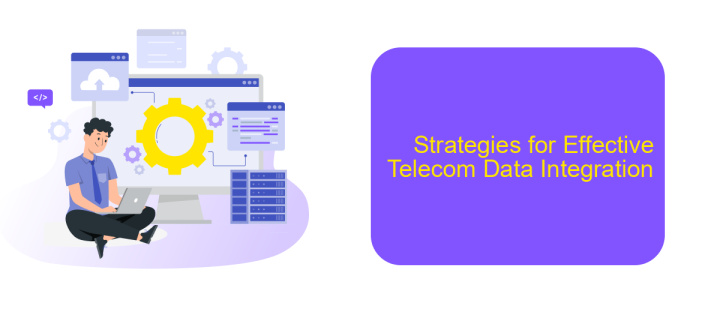Telecom Data Integration
In today's rapidly evolving digital landscape, the integration of telecom data has become crucial for optimizing network performance and enhancing customer experiences. By seamlessly merging diverse data sources, telecom companies can gain valuable insights, streamline operations, and drive innovation. This article explores the significance of telecom data integration, its key benefits, and the technologies that are transforming the telecommunications industry.
Introduction
Telecom Data Integration is a critical aspect of modern telecommunications infrastructure, enabling seamless communication and data exchange between various systems and platforms. With the ever-growing demand for efficient and reliable data management, integrating telecom data has become more essential than ever.
- Improved data accuracy and consistency
- Enhanced operational efficiency
- Streamlined customer service processes
- Better decision-making capabilities
To achieve effective telecom data integration, leveraging advanced tools and services such as ApiX-Drive can be highly beneficial. ApiX-Drive offers a user-friendly platform that simplifies the integration process, allowing telecom companies to connect their systems effortlessly. By utilizing such services, organizations can ensure that their data is synchronized, accurate, and readily available for analysis and decision-making, ultimately driving growth and innovation in the telecom sector.
Data Integration Challenges in Telecom

Telecom data integration presents numerous challenges, primarily due to the vast and heterogeneous nature of the data involved. One of the key issues is data silos, where information is isolated within different departments or systems, making it difficult to achieve a unified view. Additionally, the sheer volume of data generated from various sources, including call records, customer interactions, and network performance metrics, requires robust and scalable integration solutions. Ensuring data quality and consistency across these diverse datasets is another significant hurdle, as discrepancies can lead to inaccurate insights and decision-making.
Moreover, the integration process must address security and compliance concerns, particularly given the sensitive nature of telecom data. Effective integration solutions need to ensure that data is securely transferred and stored, adhering to industry standards and regulations. Tools like ApiX-Drive can facilitate the integration process by providing automated workflows that connect different systems and applications seamlessly. This not only reduces the manual effort involved but also ensures real-time data synchronization, enabling telecom companies to harness the full potential of their data for enhanced operational efficiency and customer experience.
Benefits of Telecom Data Integration

Telecom data integration offers numerous advantages that can significantly enhance operational efficiency and decision-making. By consolidating data from various sources, telecom companies can gain a comprehensive view of their operations, leading to improved customer service and streamlined processes.
- Enhanced Data Accuracy: Integrating data from different platforms ensures consistency and reduces errors.
- Improved Customer Insights: A unified data system provides a 360-degree view of customer interactions, helping in personalized service delivery.
- Operational Efficiency: Automation tools like ApiX-Drive simplify the integration process, reducing manual workload and operational costs.
- Real-Time Analytics: Integrated data allows for real-time monitoring and analytics, aiding in quick decision-making.
- Scalability: As telecom companies grow, integrated systems can easily scale to accommodate increased data volumes.
Incorporating tools such as ApiX-Drive can further streamline the integration process, making it easier to connect various data sources without extensive coding. This not only saves time but also ensures that the data is always up-to-date and accurate, ultimately leading to better business outcomes.
Strategies for Effective Telecom Data Integration

Effective telecom data integration is crucial for seamless operations and enhanced decision-making. The integration process involves consolidating data from various sources to ensure consistency and accessibility. To achieve this, it is essential to adopt strategic approaches tailored to the unique needs of telecom operations.
Firstly, understanding the specific requirements and challenges of your telecom environment is vital. This involves identifying the types of data to be integrated, the sources of this data, and the desired outcomes of the integration process. Once these factors are clear, you can proceed to select the appropriate tools and technologies.
- Utilize robust data integration platforms like ApiX-Drive for seamless connectivity.
- Implement data quality checks to ensure accuracy and consistency.
- Adopt scalable solutions to accommodate growing data volumes.
- Ensure compliance with regulatory standards to protect sensitive information.
By following these strategies, telecom companies can effectively integrate their data, leading to improved operational efficiency and better decision-making. Leveraging tools like ApiX-Drive can simplify the integration process, providing a reliable and scalable solution for managing telecom data.


Future Outlook and Recommendations
As the telecom industry continues to evolve, the integration of diverse data sources will become increasingly crucial. Emerging technologies such as 5G, IoT, and AI are expected to generate vast amounts of data, necessitating more sophisticated data integration solutions. Companies must invest in scalable and flexible integration platforms to harness the full potential of these technologies and stay competitive in the rapidly changing market. Additionally, adopting cloud-based solutions can offer enhanced data accessibility and security, ensuring seamless operations across various departments and locations.
To streamline the integration process, utilizing services like ApiX-Drive can be highly beneficial. ApiX-Drive provides a user-friendly interface for connecting multiple applications and automating data workflows without requiring extensive technical expertise. This can significantly reduce the time and resources needed for integration projects, allowing telecom companies to focus on innovation and strategic growth. Embracing such tools will not only improve operational efficiency but also enable better decision-making through real-time data insights, ultimately driving the industry forward.
FAQ
What is Telecom Data Integration?
Why is Telecom Data Integration important?
What are the common challenges in Telecom Data Integration?
How can automation help in Telecom Data Integration?
What are the best practices for Telecom Data Integration?
Apix-Drive is a simple and efficient system connector that will help you automate routine tasks and optimize business processes. You can save time and money, direct these resources to more important purposes. Test ApiX-Drive and make sure that this tool will relieve your employees and after 5 minutes of settings your business will start working faster.

